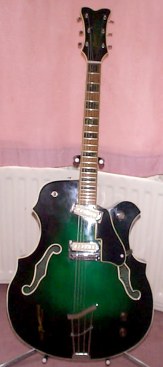| Buzz Wilder sent these
photos of his way-cool C-model. Note the white undercoating, then the gold
burst. I think this is a Harvey-made whammy. These are the "bubble"
pickguards. The plexiglas was heated in an oven and layed over a mold to
form the bubbles. The pickups are just loose coils of wire and bar magnets
wrapped in masking tape stuffed under the bubbles. |
Note also the fancy pickguard
shape. It's a kind of Grand-Ol-Opry kind of snazz. And the little raised
secondary pickguard says that this is a fingerstyle guitar. The white body
lets you see the complex beveling plan of the top. Looking at this you can
see the Moserite inspiration. Thanks Buzz! What a great example of Harvey's
eccentric genius. |
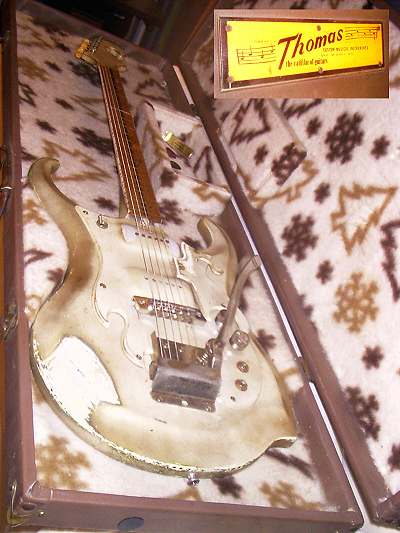 |
 |
Kevin Miller offers
this information: "My Harvey Thomas is the one
in Tony Bacon's Ultimate Guitar Book. It came from Paul Day. The
body (wait for this) is carved front and back, actually one solid piece
of wood, hollowed out and seamed together in the side like a Micro Frets.
|
The arching is carved in. Incredible! It is the
only known one to exist!"
This one features the regular German hardware. The fret markers are made
by routing a rectangular hole, dropping in some drum pearl, and filling
it with fiberglass resin. Serial number is LC3011.
|
|
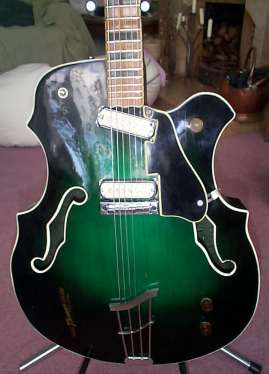 |
| On the fretboard photo you
can see that Thomas guitars always had the same fret job: frets ground down
very low, and rounded right over the edge. These guitars were not designed
for string bending. |
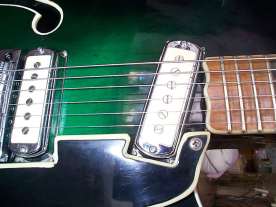 |
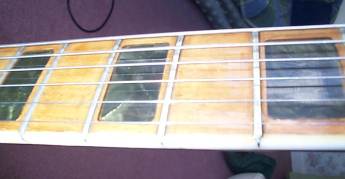 |
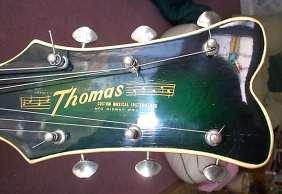 |
| Check this out! Maybe you saw
it on ebay. This must be an early one. When I first went to Harvey's shop
in 1965, the oldest instruments looked like this, gold with a heavy black
burst. Also note that the back is beveled as well as the front, and the
tuning gears are mounted on a curving line. I think this is a Harvey-made
aluminum whammy. The raised control box is so cool. It's made of layers
of cut-out plexi set in a deep rout. |
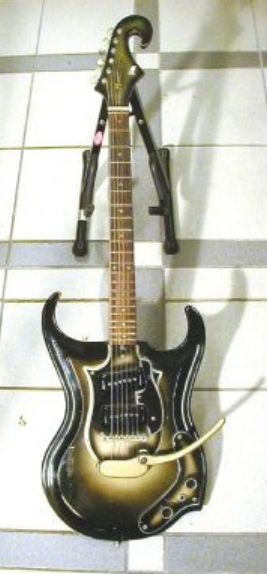 |
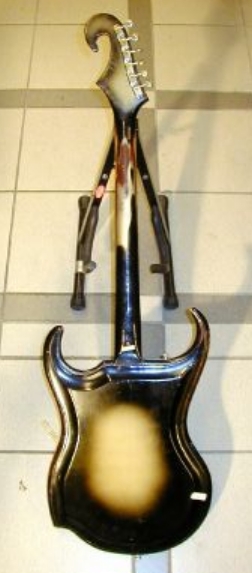 |
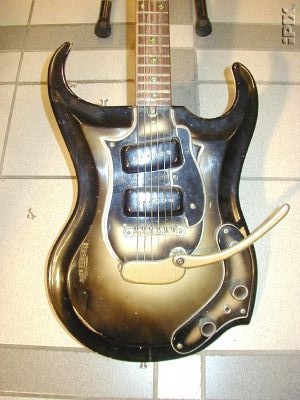 |
| Looks like a Gibson Tune-o-Matic
bridge. And there's the secondary raised pickguard. |
It's a finger rest, really,
for that Chet-style work. Harvey did not dig rock. You can also see the
truss rod adjustment above the neck pickup. |
Most of the ones I saw were
just a piece of threaded round stock with two crossing slots cut with a
hack saw. They would be adjusted with a straight screwdriver. |
I can't tell for sure on this
photo, but this might be the other kind of bubble pickup cover, where the
pickguard has a rectangular hole routed, and a bubble-shaped piece of plexi
is inserted from the back side. |
|
Hey, look at this! It is another of those full-hollow guitars! Scott
Freilich sez: "I was searching around for
info on this great Harvey Thomas creation and stumbled on your articles
about the man and his work. This one has a label that says it was made
in 1968 and was priced at $3750!! It has a serial # of 001000 and is called
a La Paz Classic Special Custom.
|
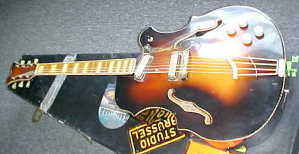
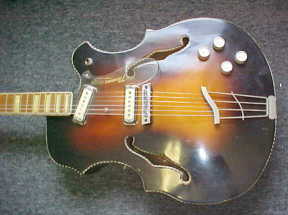 |
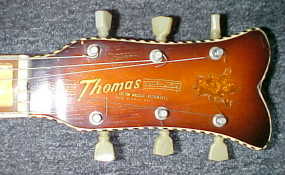
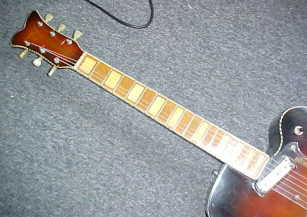 |
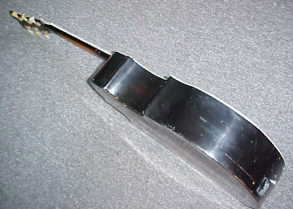
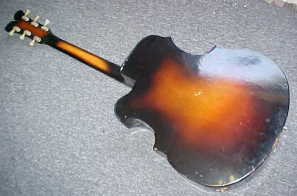
|
| I bought
it at a guitar show in Toronto from a touring musician who found it in Vancouver.
I'll probably do an article on it for my "Oddballs" column in
20th century guitar. |
The pickups
and bridge are Framus, the gears are Gibson/Kluson double ring keystone,
and the knobs are Guyatone. The back is 1" thick mahogany, and the
remainder of the instrument is mahogany."
|
|
|
Wilf Ord from the UK
says:
"I have been a big fan of Harvey Thomas' guitars,
particularly the Crosses, since I first saw the pictures of Ian Hunter playing
one on the front of the British music papers when I was a kid in the late
60s/early 70s. These photos of a Maltese Falcon were sent to me by a guy
in the states three or four years ago. He no longer owns it, and he didn't
have any details about it." |
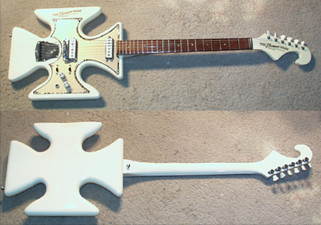
Wilf has a cool web site that gives the story of how Ian Hunter of Mott
the Hoople found his Maltese Falcon. Click the photo of Ian to go there.
|
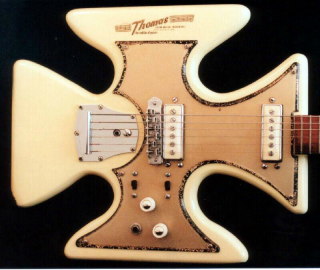 |
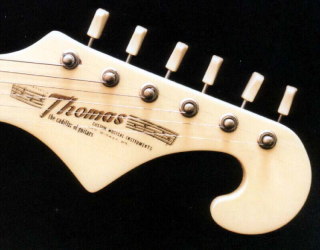
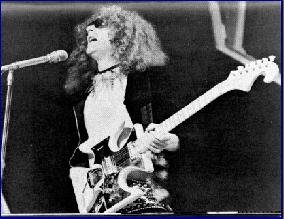
|
Here's a C-model bass. Bob
White of the Seattle area says:
"The pickguard, La Baye pickup, and bridge cover
are all crome. The serial # is C1050. I don't know its DOB." |
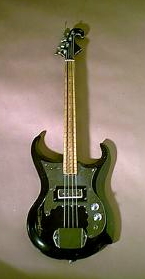 |
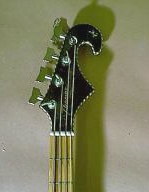 |
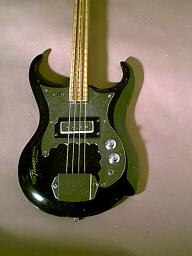 |



















